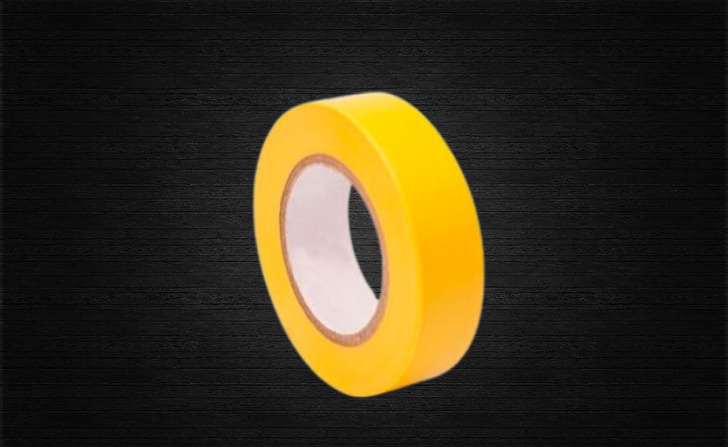Researchers at the University of Southampton in the UK successfully stored the entirety of the human genome sequence onto an indestructible 5D optical memory crystal no bigger than a penny. The indestructibility claims are no joke since the discs can withstand temperatures up to 1,000°C, cosmic radiation, and even direct impact forces of 10 tons per cm2.
These marketing types shouldn’t be allowed to call anything ‘indestructible’ until they’ve given it to my kid to play with for a week.
It’s indestructible, but not unflushable.
Careful, it may very well kill your kid and upload them to the cloud
The ‘5D’ in the name comes from the fact that, unlike 2D markings on a piece of paper or tape, this method uses two optical dimensions and three spatial coordinates to write throughout the material.
Went to the article seeking answers but got only more questions.
https://en.m.wikipedia.org/wiki/5D_optical_data_storage
The “5-dimensional” descriptor is only a marketing term, since the device has 3 physical dimensions and no exotic higher dimensional properties. The fractal/holographic nature of its data storage is also purely 3-dimensional. The size, orientation and three-dimensional position of the nanostructures comprise the so-called five dimensions.
☹️
/edit
Further down in the article it is a little clearer…
In this case, the 5 dimensions inside of the discs are the size and orientation in relation to the 3-dimensional position of the nanostructures. The concept of being 5-dimensional means that one disc has several different images depending on the angle that one views it from, and the magnification of the microscope used to view it.
The website even lists a little more…
In order to increase the data capacity of optical storage, there is the potential of storing more than one bit in a single voxel by implementing multiplex technology. The recently developed 5D optical storage technique uses birefringence as an extra degree of freedom – the property of a medium whereby its refractive index varies depending on the polarization and direction of incident light. Birefringence generated by the orientation and size of optical nano-gratings offers two extra dimensions, providing much higher storage capacities.
So, it’s supposedly three dimensions of position plus angle and (maybe?) polarity. So, it seems to be more than just a marketing gimmick, but I can’t find any information about the resolution of those additional two parameters, so I can’t tell if a single voxel stores two bits or two terabits.
It sounds kinda like the “trick” on the internet for fitting more notes onto a note-sheet for an exam. You’re still using the same physical space to store information, but you’re introducing a new degree of freedom that allows you to increase storage density.

It makes me think about how the 2.5d glass screen protectors with bevelled edge eventually became 3d for curved screen phones, then 5d, then 9d, and I’ve seen some silly 1000d and 9999d because clearly none of these marketing idiots remember what the d numbers even referred to in the first place. They used to explain what each d gave you and now its just a number and higher is better.

Seems more like 5 axis than 5 dimensions.
Sounds like a slice through the crystal that can be moved up and down and rotated through 2 angles (eg roll and pitch)5 axis and 5 dimensions are essentially the same thing, right? A 2D graph has 2 axes, a 3D one has three, 4D graph can be shown with colour representing the 4th axis, etc.
Yeh, axis was the wrong term. I was thinking degrees of freedom.
However, I misunderstood the concept.The extra dimensions are basically optical manipulation, like the other comment says with the red and blue lenses.
I thought it was more about the crystals attitude. So in addition to x, y and z, you also have alpha, beta, gamma.
Which would be 3 dimensions/axis with 6 degrees of freedom
So, as I understand it, and I don’t, 5D is just fancy marketing due to the really weird properties of the crystals used to store the data in. They are just calling properties of the crystal, dimensions.
I found the wiki page on it https://en.wikipedia.org/wiki/5D_optical_data_storage
According to the University of Southampton:
The 5-dimensional discs [have] tiny patterns printed on 3 layers within the discs. Depending on the angle they are viewed from, these patterns can look completely different. This may sound like science fiction, but it’s basically a really fancy optical illusion. In this case, the 5 dimensions inside of the discs are the size and orientation in relation to the 3-dimensional position of the nanostructures. The concept of being 5-dimensional means that one disc has several different images depending on the angle that one views it from, and the magnification of the microscope used to view it. Basically, each disc has multiple layers of micro and macro level images.[16]
It’s actually cromulent technical terminology to call those extra degrees of freedom “dimensions”, it’s only in common parlance that “dimension” is restricted specifically to spatial dimension. Having hundreds or even thousands of dimensions is not unknown in data science.
The extra dimensions are time and inception. I now know less about it than when I started.
Digitize all national history, literature, and culture. Put them on a hundred of these and distribute them all over the world. Refresh every 6 mos. Keep one on a server that all the kids can access.
Next time there’s war or whatever intolerant culture comes into power, and loots the museums, stops culture, or blows up statues, at least you’ve kept the history alive.
Think of it as the Library of Alexandria in horcrux form.
P.S. Important to include a user’s guide, reference schematics for the reader, and FAQs, etched into something semi-permanent alongside all the copies.
Make sure it has friendly words on the front line Don’t Panic.
Just shot them in all directions from the solar system into space, but also add ads so aliens know to ignore and avoid us.
If they could get VR programming on there, they could even replicate an immersive art exhibit experience. The Mona Lisa might get destroyed, but the VR experience of seeing it in person will at least live on.
5 billion years from now some archeologist reconstructing the data found on a usb stick floating in the asteroid belt only to (gleefully) find out it was a porn stash they found.
Now we ofc all know this amazing find under its famous name ‘Rosetta Bone pizza delivery service’.
Nice. We need something like this. Digital archiving is still best done on magnetic tape as disk and flash drives all fail after a few decades. But even for regular users, it’d be nice to keep a digital copy of family photos that lasts forever.
As someone who works in a digital archives, let me tell you that the honest to god problem with old tape is that you have to find an old tape reader (drive) that works. Tape from those old IBM reals still works if its not exposed to the elements. But like the modern LTO stuff, finding a reader for that old stuff is the challenge.
This is how we make the magic orbs a reality
I’ve always wanted to add some extra dimensions to my pondering
1: “Please, destroy my datacrystal when I die. Like a true friend.” 2: “But dude…it’s indestructible…” 3: “I will destroy the crystal! I will take it to mount doom!” 2: “…And my axe.”
1000°C aint that much, a blowtorch could easily reach that
Still considerably better than blueray.
Wow, Kryptonians were really ahead of the curve.
And the goa’uld, and everyone on Babylon 5…
Well on our way to the God Emperor’s stolen journals now
They say “billions of years” but that sounds like just the sort of thing a stray cosmic ray would ruin.
Maybe they’re planning on using a checksum for error correction like they do with RAID.
On that timescale, what are the odds that the checksum is still reliable?
Why would it be any different from the real data? Checksumming is basically just writing extra copies with math.
I’m asking why it would be more reliable if it has the same vulnerability to being corrupted.
Checksums are redundancy.
Right, but if the checksum is corrupted…
Yes Mr smarty pants, if all copies of data are corrupted the data is lost. More redundancy is more protection.
It isn’t writable
So? ROM uses checksums too.
What would be the point? You would just know that the data is invalid. You couldn’t fix it
Use the checksum to correct the read, just like always. You don’t repair damaged ROM anyway.
You can’t
That’s not what a checksum is
Don’t make me show you the wikipedia article.
Can’t argue with that logic.
I guess I will go back to using dd to hack the Pentagon
They probably mean EC code? That said, you can use checksums to “correct” errors if you have redundant copies of the data (by reading from the other copy if one copy has a bad checksum)
True but that isn’t possible with just a checksum and a read only medium
If all of this came true at an affordable consumer price, I think I would build a new computer just to use it
if this comes even semi consumer grade Internet archivists (and pirates) are gonna have a field day
Why did you say the same thing twice like that? 🤔
Hence my need for a new computer to take advantage of this lol
Plastic is also indestructible and look where it got us
deleted by creator
I… That’s…
Yeah. That’d be pretty rad.
Am I also finding the director’s cut in my testicles? Still rad, but markedly less so.
Plastic is also destructive and look where its profits got us
I don’t want to live in a world without plastic.
Nothing wrong with plastics (bcs the term is just do huge), it’s just how we manage it and why tf are we still using fossil fuels for it.
I want to live in a world with
materialsplastics we can live with.
Yeah, great can I buy it? No? Okay another 10 years then.
This isn’t a “this is your home PCs future storage” news. The read & write rates are probably abysmally slow and the intention here is for actual knowledge databases that may survive us as a species.
And fair enough but as it stands we’re going to lose a huge amount of data if we cant get “permanent” storage solved soon.
So I can boot Linux from it is what you are saying?
(Def can run Doom from it, but that was never in question really)
You mean… this guy might be on our horizons now?
This comes just as news about old music collections on hdds are starting to fail.
Even if this tech gets replaced soonish, ide love to start moving old media to more permanent storage solutions
can i get this for my phone?
Fits fine in the “three body problem” novel.
More on the serious side of this news, I can’t imagine the speed of writing or reading, but shouldn’t be very fast, or am I wrong?












